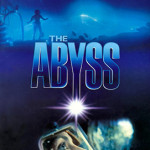 My first submersible dive happened off Rum Cay in the Bahamas in the JSL. Despite my large size, I do not remember feeling cramped inside the soda can-sized sub. The entire time I pressed my face against a 15-centimeter porthole, my cheek against the cool glass and eyes focused on the three meters of illuminated seafloor around me and the kilometers of black beyond. It was here on the seafloor, nearly one kilometer down, that I got my first look at the giant isopod, . That large roly-poly instantly, and continues, to capture my imagination. It has become another mystery in my journey to understand why deep-sea organisms are the size they are? Often a single observation of singe item or event stimulates a single question you spend the rest of your life trying to answer.
My first submersible dive happened off Rum Cay in the Bahamas in the JSL. Despite my large size, I do not remember feeling cramped inside the soda can-sized sub. The entire time I pressed my face against a 15-centimeter porthole, my cheek against the cool glass and eyes focused on the three meters of illuminated seafloor around me and the kilometers of black beyond. It was here on the seafloor, nearly one kilometer down, that I got my first look at the giant isopod, . That large roly-poly instantly, and continues, to capture my imagination. It has become another mystery in my journey to understand why deep-sea organisms are the size they are? Often a single observation of singe item or event stimulates a single question you spend the rest of your life trying to answer.
Of course, I other remember many other things about my first submersible dives on the JSL. I was accompanied by one of the most prominent members of my field, Paul Tyler, one of the authors of what is considered to be the bible of deep-sea biology. Crinoids moved as the fed on microscopic crustaceans. Fields of them reminded me of carnivorous flower garden. Sea squirts awaited their next prey. Normally filter feeders, some deep-sea carnivorous species shaped like little sock puppets take much larger prey.
These experiences combined to give me a first hand knowledge of an environment, that previously I had only studied remotely. I studied the deep sea for three years before my first deep dive and my understanding, although incomplete, of this environment has radically changed since those dives in the JSL. And although I originally made these comments before about Alvin, they are no less true about the JSL’s…they stir the public imagination.
Why? As long as there are manned explorations of these environments, we can all dream of visiting these unique places and experiencing them for ourselves. We can place ourselves inside the [JSL], imagine experiencing it first hand, and form a connection. How many of those who involved in the space program were motivated as children watching shuttle launches. Of course we realize that our chances of actually doing this are minute, but so are the chances of throwing a touchdown pass in the superbowl. As humans we need to dream and make the connection.
The lose of the JSL’s is a disaster for science and for the communication of science to the public. GO SIGN THE PETITION NOW!






2 Replies to “JSL and Giant Isopods”
Comments are closed.